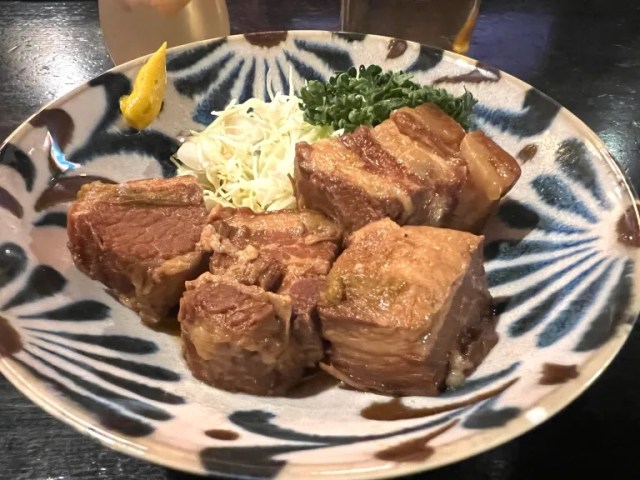
Chili sauce made with expensive Okinawa liquor has got to be better than any others!
When you think of Okinawan cuisine, the first dishes to come to mind are probably Okinawa soba (also called soki soba) and goya champuru, a stir-fry dish made with bitter melon. But did you know that there’s one particular Okinawan ingredient used to dress those dishes that’s crucial to drawing out their flavors? It’s called koregusu, and it’s an Okinawan chili sauce.
Koregusu is made by pickling Okinawa hot peppers in awamori, the island’s signature strong distilled-rice liquor, for one month. The result is a spicy chili sauce with an almost clear color, plus some alcohol content.
You can buy ordinary brands of koregusu at just about any supermarket in the prefecture, but our Japanese-language reporter Kouhey, who recently took a trip to the Okinawan islands, happened to find a special kind that uses a “mythical awamori”. Of course, he had to buy it and compare it to ordinary koregusu.
Awamori is a strong distilled liquor made from long-grain rice, and is the representative alcoholic beverage of Okinawa. For this special koregusu, an awamori brand called Awanami is used, and if you’re an awamori fan, you’ll probably already know about it. It’s a rare kind of awamori made on the Japan’s southernmost inhabited island, Hateruma Island, and thus is quite expensive.
Kouhey has been to Hateruma twice before, so he knows that glasses of Awanami are fairly reasonable on the island. But once you leave the island, the price rises sharply. Even in Okinawa, the cost per glass about doubles. In Tokyo, it’s nearly impossible to find, even at Okinawan restaurants, and when you do happen to stumble across it, the price per glass is insane compared to other standard types of awamori.
▼ A glass of Awanami is 1,800 yen (US$12.30) compared to 600 yen for the more common brands.
So if Awanami awamori is so rare, how did Kouhey manage to find a koregusu that uses it? That’s because he found it at Awamori Jelly Honpo, a liquor shop and bar he makes sure to make a stop at every time he visits Ishigaki Island. They actually make it themselves, like they do their awamori jelly.
▼ Awamori Jelly Honpo’s Awanami koregusu
A bottle of their Awanami Koregusu sells for 5,500 yen. While that sounds very expensive, when Kouhey thought about how it’s not sold in the general market, and how you can’t really find koregusu made with Awanami anywhere else, he considered it well worth the price.
When he returned to the Tokyo area, he set out to compare it to regular koregusu when used in Okinawan dishes, but since he doesn’t really know how to cook them, he decided to enlist the help of Orion Shokudo, an Okinawan izakaya pub. Orion Shokudo serves Okinawan cuisine and liquor and hosts performances of Okinawan folk songs, so it’s a great place to get a taste of Okinawan culture closer to Japan’s capital city. Kouhey visited the branch that’s just a three-minute walk from Gyotoku Station in Chiba, just east of Tokyo, and he brought his bottle of Awanami Koregusu with him.
The restaurant provides their own homemade koregusu, so he decided to compare the two on some of the restaurant’s dishes to see if they taste different.
But first, he tasted just a little bit of each straight to get a general feel for each one’s flavor.
He started with the restaurant’s koregusu.
It definitely had a hint of spice, but the aftertaste was rather refreshing.
Kouhey then tried a taste of the Awanami Koregusu.
It had a greater degree of depth to it, and added more dimensions to the flavor of the koregusu. But though Awanami itself has a very light flavor, the koregusu made with it was far spicier than the ordinary kind.
With an initial taste test complete, Kouhey tried both varieties on Okinawa soba.
First, he drizzled on some of the restaurant’s koregusu…
It was a very familiar flavor, though Kouhey thought maybe the dish could do with a splash more to really get a sense of the chili sauce’s taste.
Then he tried garnishing it with the Awanami Koregusu and took a bite…
Oh! The flavor had changed a lot. Kouhey could taste the same depth that he’d experienced from the sauce on its own, but adding it into Okinawa soba drew out even more levels. He could really taste the umami of the combination, just in the broth.
Kouhey then tried each one on rafute, an Okinawan dish of stewed pork belly.
Now, Kouhey has never actually added koregusu to rafute before, so this would be his first time trying the combination at all. First he started with the restaurant’s koregusu.
Oops…He might have used a little too much. The flavor of the awamori was a bit strong and had overpowered the delicious flavor of the rafute.
It was unfortunate, but in the interest of fairness, he decided to put in the same amount of Awanami Koregusu.
Oooh! Its richness and spice paired really well with the rafute. There was a clear difference between the two koregusu that Kouhey could really taste.
As a last test, Kouhey tried each koregusu in Okinawa-style miso soup, which is made with a mixture of vegetables instead of the simple broth of green onions and seaweed that’s popular in most of the rest of Japan.
This dish is pretty rare to find, even at Okinawan restaurants. Kouhey really likes Orion Shokudo’s version of it, so he often orders it to finish off his meal, but he’s never put koregusu in it before either. As with the other tests, he tried it with the regular koregusu first.
Would it actually pair well? Kouhey was a bit nervous as he raised a spoonful to his lips…
Hmm…It didn’t seem to be such a good match, at least not with the awamori used to make the koregusu. It unfortunately overpowered the miso. There was a strong possibility that koregusu in general just wouldn’t be a good topping for Okinawan miso soup, but Kouhey wanted to try the Awanami version anyway.
With slight trepidation, he slurped up a spoonful…
Ohh…The miso flavor was still there! But the spicy flavor did win out a little bit, so Kouhey guessed that Awanami Koregusu could be a really good condiment for Okinawa-style miso soup if you find the right amount to pour in.
Based on this experiment, Kouhey determined that the flavors and effects of koregusu can vary greatly depending on the brand and exact ingredients. The age of the awamori used can also make a difference. For example, the Awanami used in the koregusu Kouhey bought was manufactured in January 2022, which isn’t very old for awamori. How long the chilis are soaked in the awamori also makes a difference. According to the manager at the Gyotoku branch of Orion Shokudo, the longer the concoction sits, the spicier it gets. So you could get very different flavors each time you try it!
Kouhey really enjoyed testing out the Awanami Koregusu, but since he doesn’t cook much Okinawan food at home, he decided to gift it to Orion Shokudo, who could surely use it better. You might get the chance to taste it if you visit the restaurant, so if you’re curious about trying it, definitely pay a visit to the Gyotoku branch!
Restaurant information
Okinawa Izakaya Orion Shokudo Gyotoku Branch / 沖縄居酒屋 オリオン食堂 行徳店
Address: Chiba-ken Ichikawa-shi Gyotoku Ekimae 2-23-6
千葉県市川市行徳駅前2-23-6
Open 5 p.m.-midnight
Photos © SoraNews24
● Want to hear about SoraNews24’s latest articles as soon as they’re published? Follow us on Facebook and Twitter!
[ Read in Japanese ]

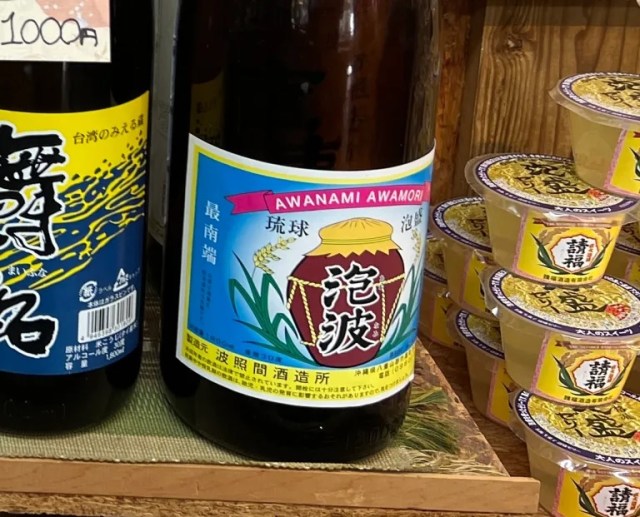
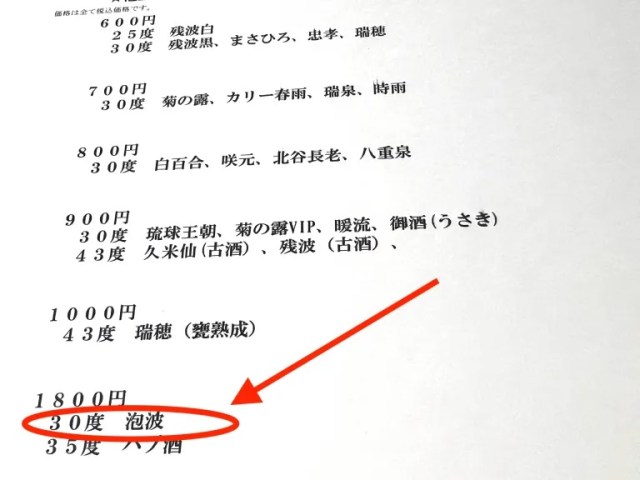
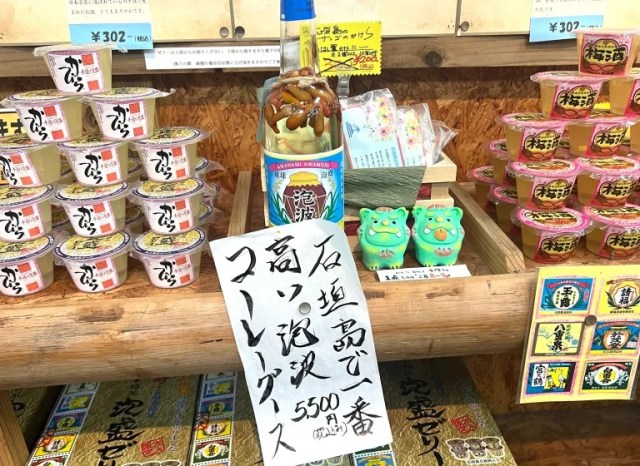
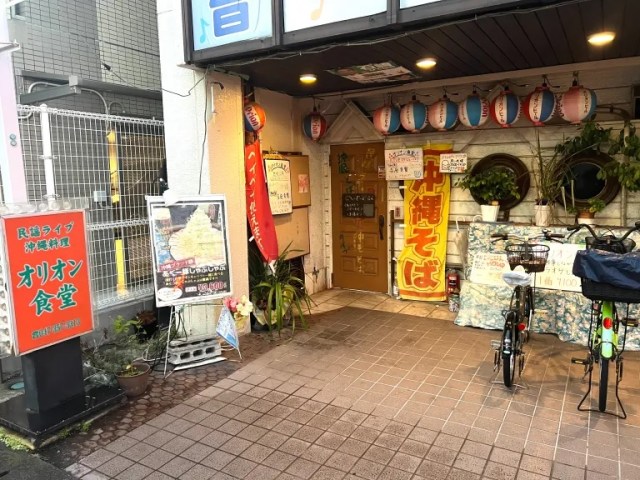
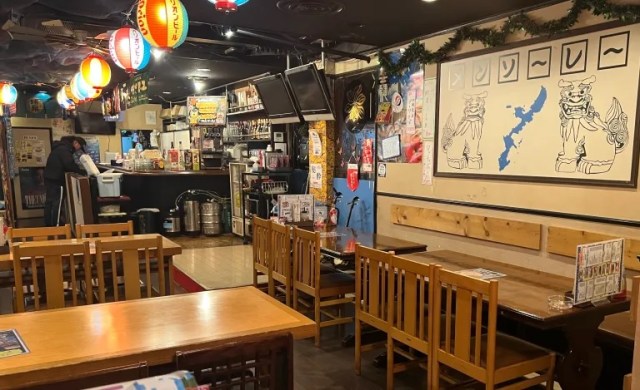
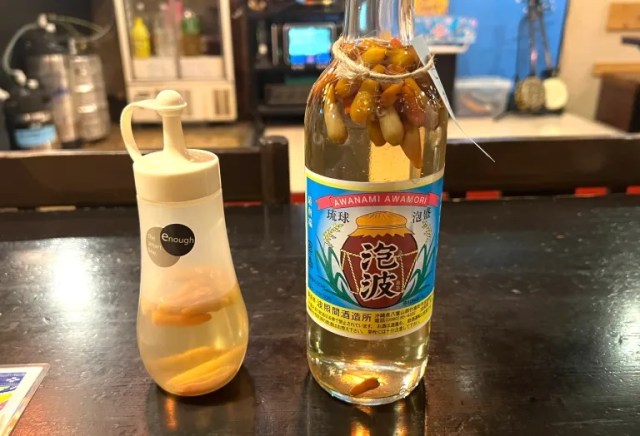
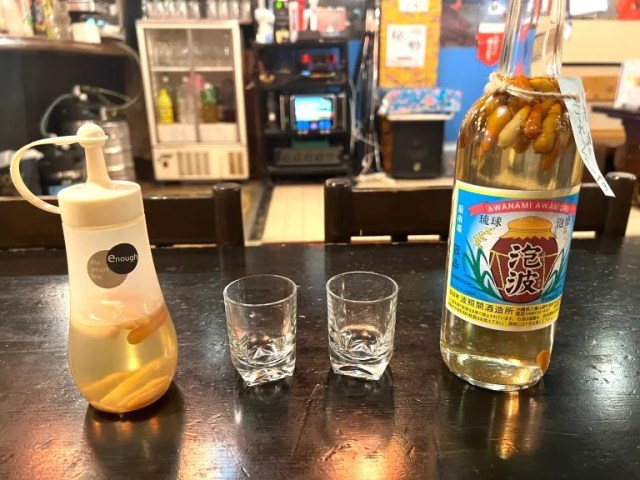
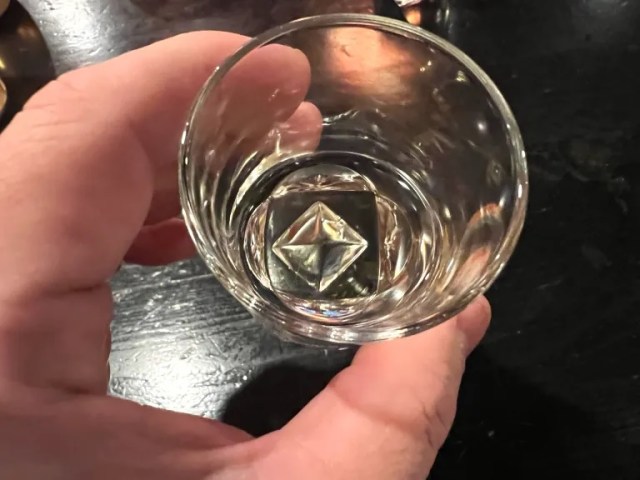
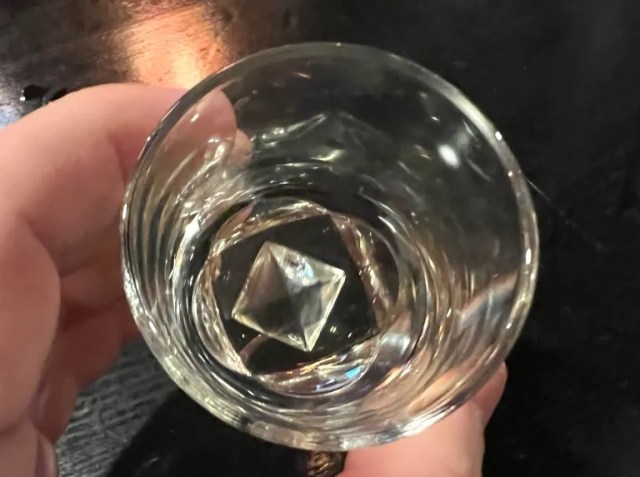
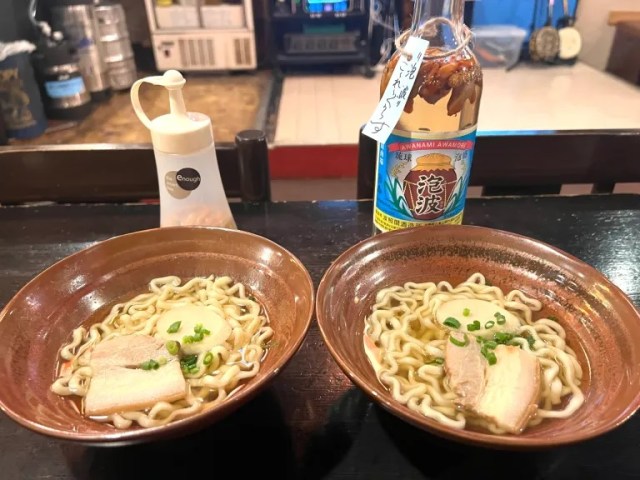

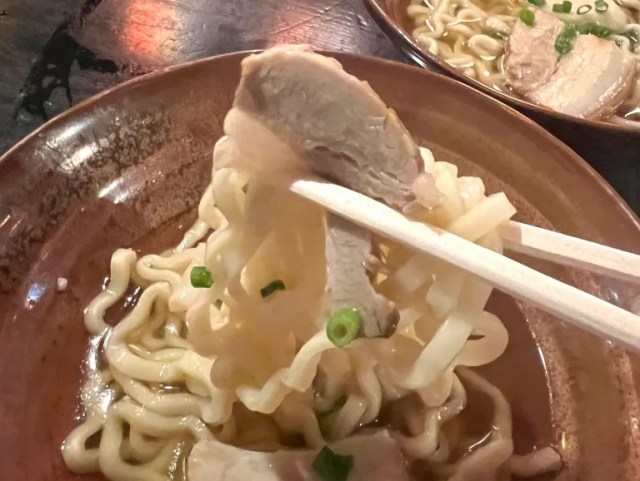
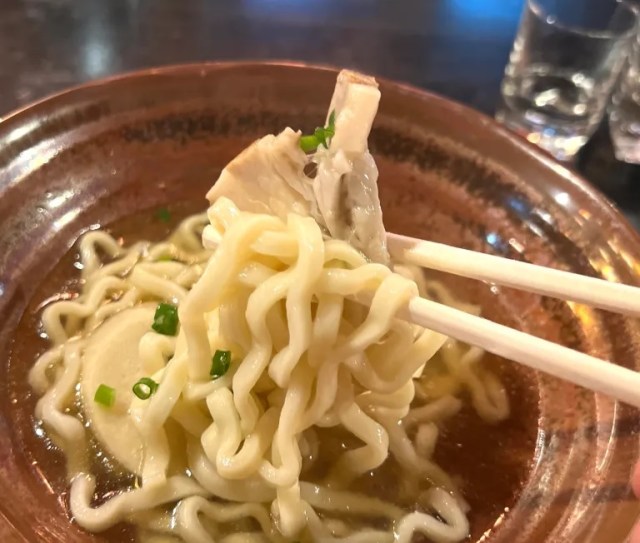
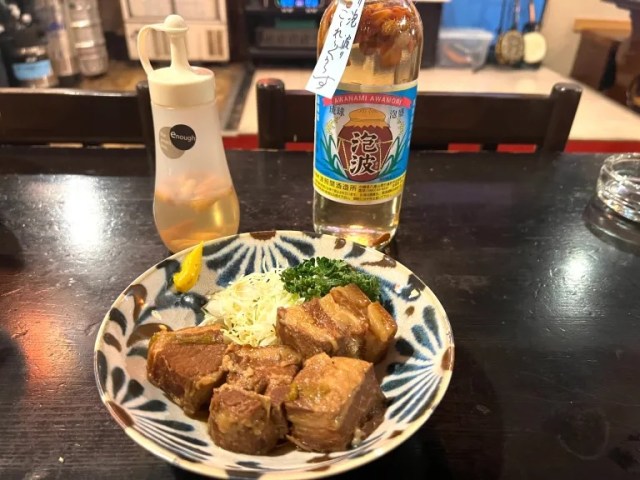
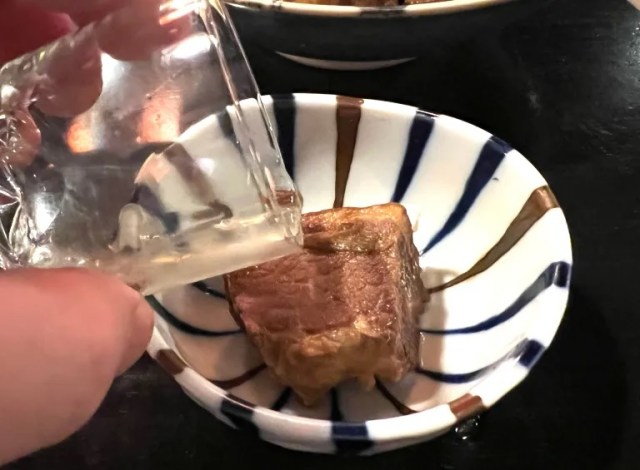
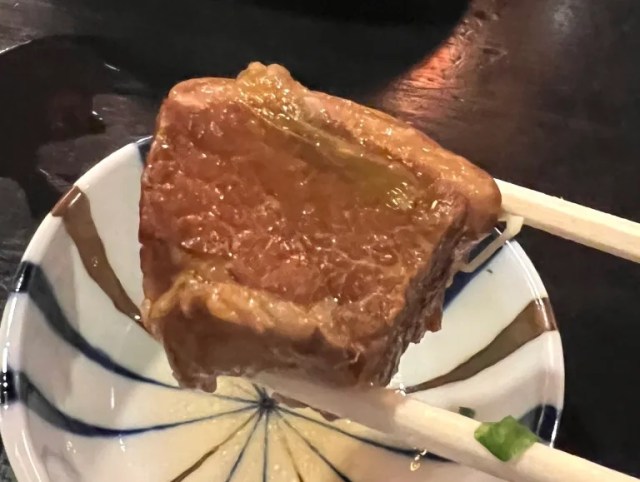
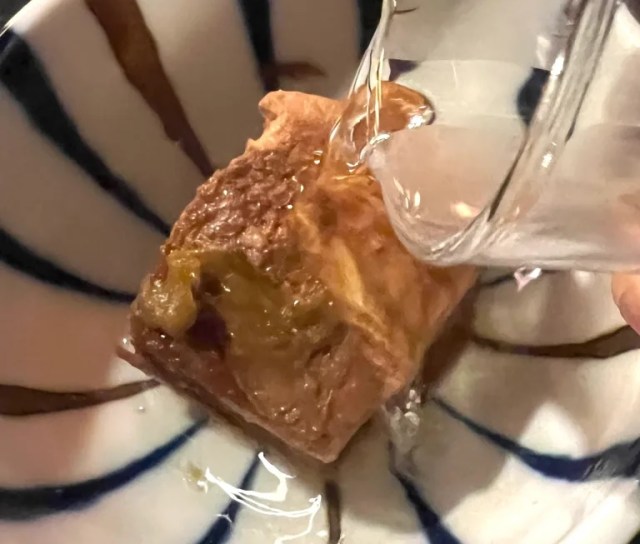
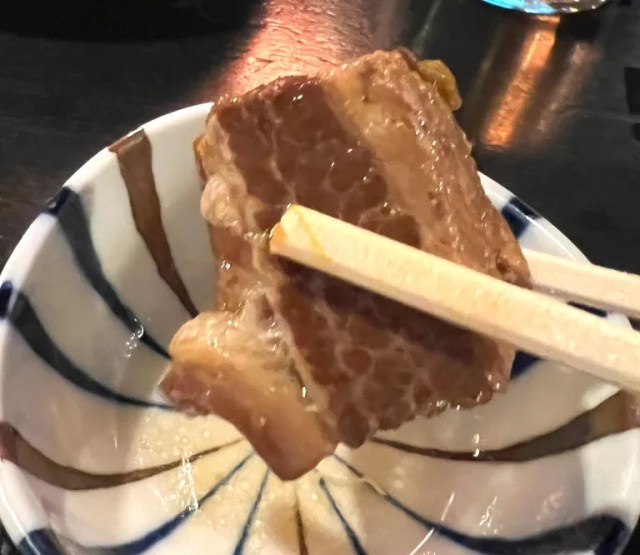

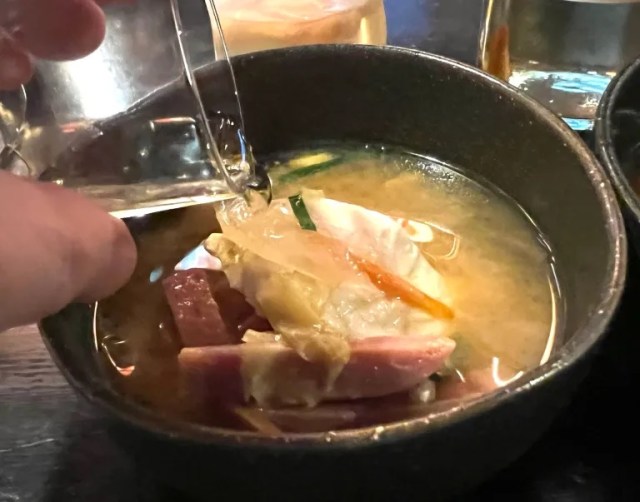
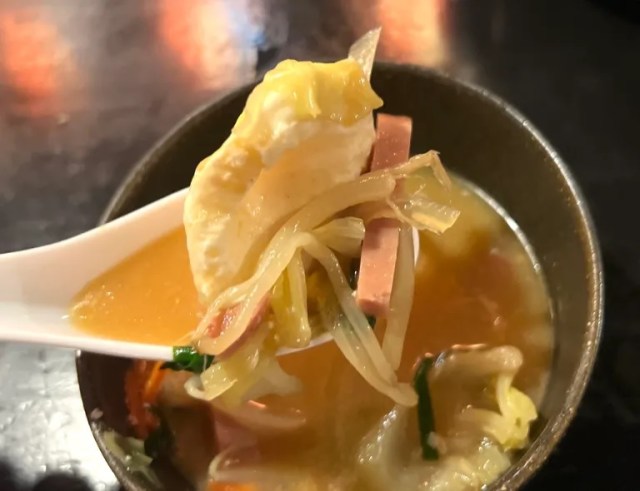

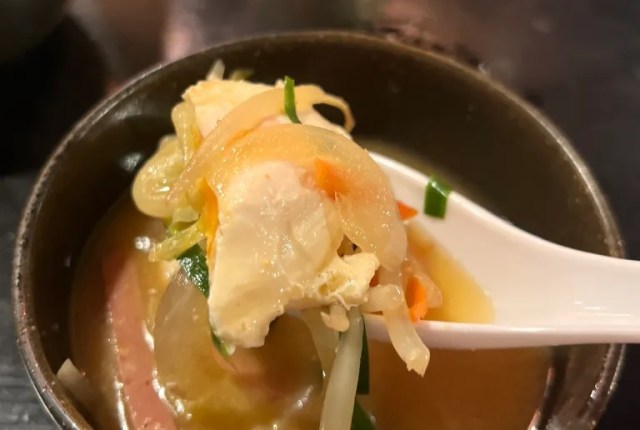
 How drunk can Awamori Jelly infused with liquor from Okinawa make us?
How drunk can Awamori Jelly infused with liquor from Okinawa make us? We try hone-jiru (bone soup), a delicious Okinawan specialty hard to find on mainland Japan
We try hone-jiru (bone soup), a delicious Okinawan specialty hard to find on mainland Japan Okinawan soul fool Pork Tamago Onigiri sold not at a five-star restaurant, but at an airport
Okinawan soul fool Pork Tamago Onigiri sold not at a five-star restaurant, but at an airport “Hey, Japanese taxi driver, take us to the best Yaeyama soba noodles on Ishigaki Island!”
“Hey, Japanese taxi driver, take us to the best Yaeyama soba noodles on Ishigaki Island!” We eat at an Ishigaki Island hotel breakfast buffet that has incredible value for the money
We eat at an Ishigaki Island hotel breakfast buffet that has incredible value for the money How to order snacks on a Shinkansen bullet train in Japan
How to order snacks on a Shinkansen bullet train in Japan Demon Slayer: Kimetsu no Yaiba gets new roller coaster attractions and food at Universal Studios Japan
Demon Slayer: Kimetsu no Yaiba gets new roller coaster attractions and food at Universal Studios Japan New samurai glasses are Japan’s latest weird must-have souvenir
New samurai glasses are Japan’s latest weird must-have souvenir Burger King Japan suddenly adds Dr. Pepper and Dr. Pepper floats to its menu nationwide
Burger King Japan suddenly adds Dr. Pepper and Dr. Pepper floats to its menu nationwide Nintendo history you can feel – Super NES, N64, and GameCube controllers become capsule toys
Nintendo history you can feel – Super NES, N64, and GameCube controllers become capsule toys High-fashion Totoro cuddle purse is like an elegant stroll in the forest【Photos】
High-fashion Totoro cuddle purse is like an elegant stroll in the forest【Photos】 Japan’s new difficult-to-drink-from beer glass protects your liver, but it’s a brutal experience
Japan’s new difficult-to-drink-from beer glass protects your liver, but it’s a brutal experience Kyoto Tower mascot termination reveals dark side behind cute Japanese characters
Kyoto Tower mascot termination reveals dark side behind cute Japanese characters New Pokémon ice cream, dessert drinks, and cool merch coming to Baskin-Robbins Japan【Pics】
New Pokémon ice cream, dessert drinks, and cool merch coming to Baskin-Robbins Japan【Pics】 To combat declining birth rate, Japan to begin offering “Breeding Visas” to foreigners
To combat declining birth rate, Japan to begin offering “Breeding Visas” to foreigners Hello, cosmetics! Clinique teams up with Hello Kitty this summer for first-time collaboration
Hello, cosmetics! Clinique teams up with Hello Kitty this summer for first-time collaboration “The most Delicious Cup Noodle in history” – Japan’s French Cup Noodle wins our heart【Taste test】
“The most Delicious Cup Noodle in history” – Japan’s French Cup Noodle wins our heart【Taste test】 Starbucks releases a cute Frappuccino and Unicorn Cake…but not in Japan
Starbucks releases a cute Frappuccino and Unicorn Cake…but not in Japan McDonald’s Japan’s Soft Twist Tower: A phantom ice cream only sold at select branches
McDonald’s Japan’s Soft Twist Tower: A phantom ice cream only sold at select branches Yabai Ramen: What makes this Japanese ramen so dangerous?
Yabai Ramen: What makes this Japanese ramen so dangerous? Finally! Nintendo Japan expands Switch 8-bit controller sales to everybody, Online member or not
Finally! Nintendo Japan expands Switch 8-bit controller sales to everybody, Online member or not Japanese government wants to build luxury resorts in all national parks for foreign tourists
Japanese government wants to build luxury resorts in all national parks for foreign tourists 10 things you should buy at 7-Eleven in Japan
10 things you should buy at 7-Eleven in Japan Studio Ghibli releases anime heroine cosplay dresses that are super comfy to wear
Studio Ghibli releases anime heroine cosplay dresses that are super comfy to wear Woman charged for driving suitcase without a license in Osaka
Woman charged for driving suitcase without a license in Osaka Studio Ghibli unveils My Neighbour Totoro miniature house model
Studio Ghibli unveils My Neighbour Totoro miniature house model Kyoto experiencing problems with foreign tourists not paying for bus fares, but not on purpose
Kyoto experiencing problems with foreign tourists not paying for bus fares, but not on purpose Fighting mild hunger with a Japanese soda that turns into jelly in the stomach【Taste test】
Fighting mild hunger with a Japanese soda that turns into jelly in the stomach【Taste test】 Studio Ghibli’s Howl’s Moving Castle tapestry unveiled in Japan for first time
Studio Ghibli’s Howl’s Moving Castle tapestry unveiled in Japan for first time McDonald’s new Happy Meals offer up cute and practical Sanrio lifestyle goods
McDonald’s new Happy Meals offer up cute and practical Sanrio lifestyle goods Sales of Japan’s most convenient train ticket/shopping payment cards suspended indefinitely
Sales of Japan’s most convenient train ticket/shopping payment cards suspended indefinitely Sold-out Studio Ghibli desktop humidifiers are back so Totoro can help you through the dry season
Sold-out Studio Ghibli desktop humidifiers are back so Totoro can help you through the dry season Japanese government to make first change to romanization spelling rules since the 1950s
Japanese government to make first change to romanization spelling rules since the 1950s Foreigner’s request for help in Tokyo makes us sad for the state of society
Foreigner’s request for help in Tokyo makes us sad for the state of society Ghibli founders Toshio Suzuki and Hayao Miyazaki contribute to Japanese whisky Totoro label design
Ghibli founders Toshio Suzuki and Hayao Miyazaki contribute to Japanese whisky Totoro label design Doraemon found buried at sea as scene from 1993 anime becomes real life【Photos】
Doraemon found buried at sea as scene from 1993 anime becomes real life【Photos】 Tokyo’s most famous Starbucks is closed
Tokyo’s most famous Starbucks is closed Princesses, fruits, and blacksmiths: Study reveals the 30 most unusual family names in Japan
Princesses, fruits, and blacksmiths: Study reveals the 30 most unusual family names in Japan Trying some Umui sauces made only on a remote Japanese island with a population of 50【Taste test】
Trying some Umui sauces made only on a remote Japanese island with a population of 50【Taste test】 We visit super popular tuna specialty joint Izakaya Hitoshi on Okinawa’s Ishigaki Island
We visit super popular tuna specialty joint Izakaya Hitoshi on Okinawa’s Ishigaki Island Garlic-stuffed whole chickens sold at vending machine in Okinawa’s Naha Airport
Garlic-stuffed whole chickens sold at vending machine in Okinawa’s Naha Airport This remote island guest house may have converted our “private rooms only” traveling reporter
This remote island guest house may have converted our “private rooms only” traveling reporter 7-Eleven’s new whipped cream sandwich takes Japanese convenience store food to a whole new level
7-Eleven’s new whipped cream sandwich takes Japanese convenience store food to a whole new level Our natto maniac verifies the legitimacy of fermented soybean-flavored potato chips【Taste test】
Our natto maniac verifies the legitimacy of fermented soybean-flavored potato chips【Taste test】 Does getting a perm help hide the thinning hair spots on your head? We try it and find out
Does getting a perm help hide the thinning hair spots on your head? We try it and find out We were blown away by Funabashi Sauce Ramen, just a short ride from central Tokyo【Taste test】
We were blown away by Funabashi Sauce Ramen, just a short ride from central Tokyo【Taste test】 East Japan’s best food truck? Eating crepes from the winner of the Kanto Kitchen Car Championship
East Japan’s best food truck? Eating crepes from the winner of the Kanto Kitchen Car Championship We try the heavenly bread at Tommy’s on Ishigaki Island in Okinawa
We try the heavenly bread at Tommy’s on Ishigaki Island in Okinawa Japan’s Sailor Moon moon-viewing sandwich returns to Mos Burger, but does it taste the same?
Japan’s Sailor Moon moon-viewing sandwich returns to Mos Burger, but does it taste the same? What can 3,000 yen get you at a Japanese hamburger chain? We find out
What can 3,000 yen get you at a Japanese hamburger chain? We find out What does an EXACTLY 5,000-yen meal at Japan’s Mos Burger look like (and can one man eat it all)?
What does an EXACTLY 5,000-yen meal at Japan’s Mos Burger look like (and can one man eat it all)? Attending Japanese women’s pro wrestling live for the first time ever–and having an absolute blast
Attending Japanese women’s pro wrestling live for the first time ever–and having an absolute blast Looking to have the best night out on Ishigaki Island in Okinawa? Go to this enka pub right now
Looking to have the best night out on Ishigaki Island in Okinawa? Go to this enka pub right now
Leave a Reply